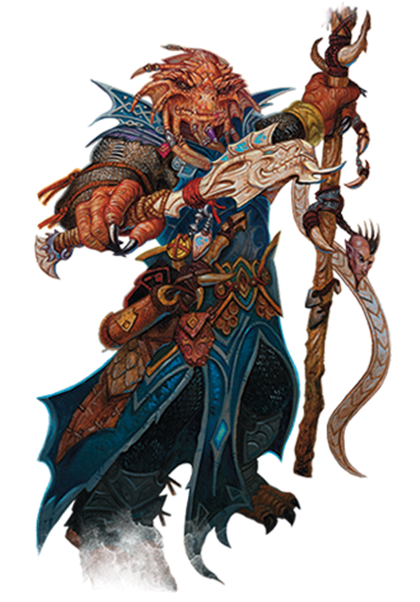D&D 5e: Gnome Rogue Guide

D&D 5e: Gnome Rogue Guide
One of the most archetypal race/class combos in the game, going back to its introduction in 1975 when it was called a “thief”, is the halfling rogue. With impressive abilities directly related to stealth and squeezing into small places, it is an obvious choice. However, that does not mean that the option of playing as a gnome rogue should be overlooked; on the contrary, for more creative players it may be preferable. Being “naturally stealthy” is good, but isn’t a rogue who can build gadgets or talk to animals more interesting?
The Gnome race AND the Rogue class can be found in the Player’s Handbook. Click here to pick up your own copy of The Player’s Handbook!
How to Make a Gnome Rogue
You can roll your stats using the 4d6 method described in the Player’s Handbook or you can take the standard array of 15, 14, 13, 12, 10, and 8. I recommend putting the 15 in Dexterity (forest gnomes will gain a +1 bonus here, increasing that number to 16), 14 in Intelligence (all gnomes gain +2 Intelligence, increasing this number to 16), 13 in Constitution (rock gnomes gain +1 Constitution, which brings this number to 14), 12 in Wisdom, 10 in Charisma, and 8 in Strength.
You can decide to do differently but the archetypal gnome rogue is good at two things: making messes and getting out of them. The way you will do this will be explained later, but for now be aware that this recommended build will probably result in a character who relies on quick wits, innovation, creative solutions, and their ability as a rogue to deal damage quickly and escape from danger just as fast. Due to fairly low scores in Wisdom, Charisma, and Strength, you should be wary of relying on your gnome to survive in the wilderness, charm friends and foes, or win weightlifting competitions.
If your DM is especially brutal, this will be a hard rule for you. If your DM is more interested in telling a rich story, then it might be fun to put your gnome rogue in such situations regardless just for the hilarious failures or shocking triumphs that may occur.
Either gnome subrace is excellent for a rogue, although in this writer’s opinion the forest gnome is just slightly more useful than the rock gnome. For a start, forest gnomes gain +1 Dexterity rather than +1 Constitution. Both are useful to a rogue, as they value both sneaking around and staying alive, but in their case Dexterity is too directly related to their class’ features to fully disregard it.
The ability to cast minor illusion and talk to small beasts might be considered more flavor than utility, but imagine a gnome rogue, beaten and bloody, calling for aid from a family of squirrels they befriended the previous morning by sharing their breakfast. Silly? Yes. Probably only possible with lots of high Wisdom (Animal Handling) rolls, creative thinking, and a DM who’s willing to allow it? Yes. A brilliant moment? Definitely.
None of this is to say that the rock gnome’s “tinker” ability is useless. The gadgets you create with it might be simple but with a creative application they could be invaluable, especially considering that they can be given to other characters to use. In my opinion, however, you will probably get just as much mileage out of minor illusion as any clockwork toy.
There is a third gnome subrace, found in Mordenkainen’s Tome of Foes: the deep gnome, or svirfneblin (do not ask me how to pronounce this word, because I do not know). This subrace shines when used in mountainous regions, caves, or vast underground networks such as the Underdark or Hell itself, but becomes slightly less useful outside of those biomes. 120 feet of darkvision (as opposed to the usual 60) is always nice, but their “stone camouflage” feature explicitly only works with a rocky or underground backdrop. The biggest positive in my mind is that deep gnomes are one of the rare races that get 120 feet of darkvision without also having sunlight sensitivity, making them decent choices even for campaigns that take place mostly in the open air.
How to Play a Gnome Rogue

Outside of combat, a gnome rogue is adept at finding information swiftly and stealthily. +2 to your Intelligence score gives you a stronger grasp of the Arcana, Investigation, History, and Religion skills, meaning that you are well-suited to seeking out answers for the many mysteries that your party will become embroiled in. When there’s no library nearby, a forest gnome can consult the small beasts in the area for wisdom and information.
I remember a time a gnome rogue in my game asked the local ducks about the state of labor rights in the nearby docks, leading to a workers’ riot the following evening. Of course, animals often don’t see things the same way humanoids do and thus their information might be skewed in favor of things they find important such as food, danger, and mating. In these situations, a rock gnome will perhaps be more useful, as it is unlikely that any small animal will know “magic items, alchemical objects, or technological devices” as they do.
When swords and staves are drawn in combat, your best bet is to double down on the gnome’s affinity for illusions by choosing to become an arcane trickster at 3rd level. This subclass grants you limited access to the wizard’s suite of spells, mostly illusion and enchantment magic. From there, your best spell choices at the 3rd level are some combination of the cantrips message (conjuration), friends (enchantment), prestidigitation (transmutation), and firebolt (evocation). You get mage hand for free, plus a special feature called “mage hand legerdemain” that makes the hand invisible and capable of picking locks and picking pockets. While we’re here, it’s worth mentioning that creative players will find that this feature synergizes well with the rock gnome’s “tinker” ability if you use the mage hand to move the gadgets you create by magic.
How to Roleplay as a Gnome Rogue
As always, the exact personality of your gnome rogue is up to you. The Player’s Handbook says that “a gnome’s energy and enthusiasm for living shines through every inch of [their] body” as if that’s a fact, but you have my permission to play your gnome as a sullen grump (which, might I add, the deep gnomes who were added via Mordenkainen’s Tome of Foes are often depicted as).
Regardless, one of the biggest driving factors for a gnome’s motivations is curiosity, which ties in rather well with the flavor of the rogue as a thief/explorer. Consider the curiosity that drove your gnome rogue into a life of adventure.
Could it be that they have a burning question that only delving into the arcane arts can answer? Do they wish to see new places and meet new people? Is the mystery they seek something that haunts them to the core, or does it fill them with excitement for every new day? Even disregarding curiosity as a driving force, the main thing that seems to drive a gnome is their propensity for good-natured meddling. They see something that needs investigating, fixing, or deconstructing, it can be hard for them to resist.








